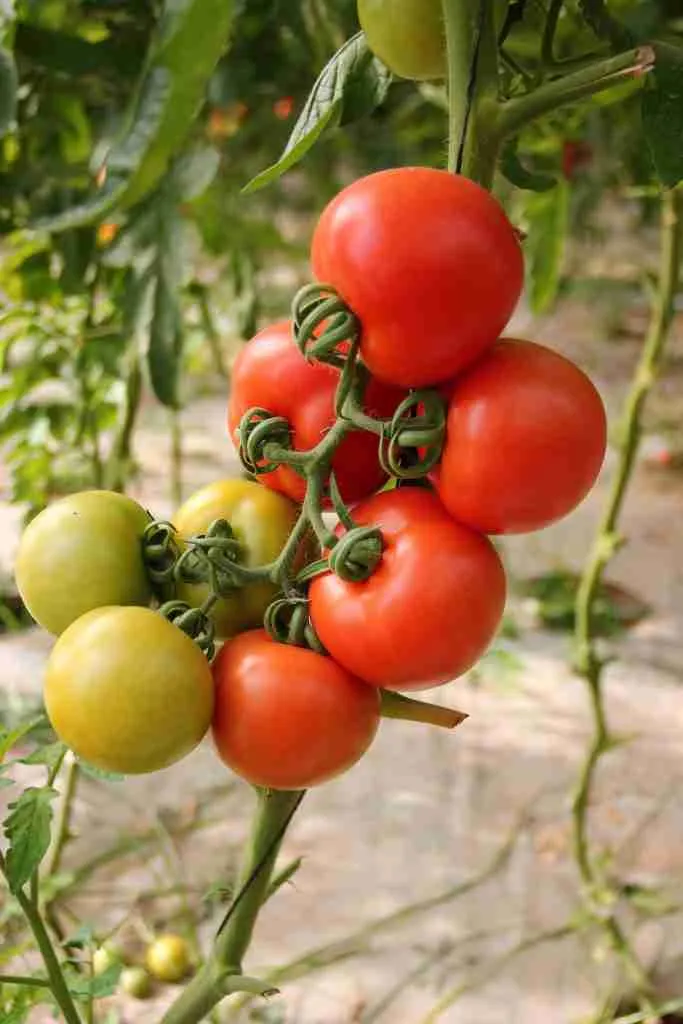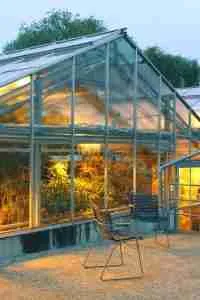Contents
ToggleKey Takeaway:
- Tomato season typically occurs during the summer months. It is the prime time for tomatoes to grow and is important for culinary purposes, as the flavor and quality of tomatoes are at their best during this season.
- When planting tomato seedlings, it is crucial to consider the timing for a successful growing year. Planting seedlings in the appropriate season ensures favorable growing conditions and higher chances of a bountiful harvest.
- The tomato season varies based on different regions. This variation in timing requires meal planning and sourcing fresh tomatoes accordingly. Knowing the specific months of tomato season in your area helps in enjoying the peak flavor and availability of locally grown tomatoes.
General Season For Tomatoes
The humble tomato, a staple in many of our favorite dishes, has its perfect moment under the sun. While tomatoes grace our plates all year round, there’s a particular season when they truly shine.
Summer is often hailed as the prime time for these red beauties, bursting with unmatched flavor and juiciness. If you’ve ever bitten into a sun-ripened summer tomato, you’ll understand its culinary magic.
And for those nurturing green fingers, having a handy guide to know when to introduce seedlings to the soil can make all the difference. Let’s embark on a journey through the tomato’s seasonal story and discover its delicious influence on our meals.
Tomato season during summer
Tomato season during the summer is a crucial time for culinary purposes and successful tomato cultivation. The timing of the season varies based on regions, with meal planning being important to ensure the sourcing of fresh tomatoes. The USDA Hardiness Zone Map plays a vital role in determining tomato growing seasons in different zones.
For example, in Zone 4, starting tomatoes indoors and then transplanting them outdoors is recommended. Knowing the best soil for tomatoes can also enhance their growth and yield.
In Zone 7, occasional frosts pose challenges, and gardeners might also notice issues like tomato leaves curling, which can be addressed with the right care.
In Zone 10, the tomato season lasts from May to early October.
Overall, understanding these factors and following appropriate gardening practices can lead to a bountiful tomato harvest during the summer months.
Additionally, frost conditions can significantly impact tomato plants during the summer season. Greenhouse tomatoes also have their own unique seasonality patterns that need to be considered for successful cultivation. Understanding these factors will help farmers and gardeners determine the optimal timing for planting and harvesting their tomatoes.
True Story:
Jenny was an avid gardening enthusiast who eagerly awaited the arrival of summer each year. She had meticulously planned her tomato garden to ensure she had fresh tomatoes throughout the entire warm season. From choosing specific varieties suitable for her region’s hardiness zone to protecting her plants from occasional frosts in Zone 7, Jenny was dedicated to having a successful tomato season during summer. Her efforts paid off when she harvested plump juicy tomatoes that became the star ingredients in her homemade pasta sauces and refreshing salads all summer long.
Importance of tomato season for culinary purposes
Tomato season holds great significance for culinary purposes as it determines the availability of fresh and flavorful tomatoes, essential ingredients in various dishes. The season allows chefs and home cooks to create vibrant and delicious recipes that rely on the robust taste and texture of ripe tomatoes. During this time, tomatoes are at their peak quality, offering a burst of sweetness and acidity that enhances the overall flavor profile of countless dishes.
Moreover, the importance of tomato season extends beyond enjoyment in the kitchen. Fresh tomatoes are packed with essential nutrients, including vitamins A, C, and K, as well as antioxidants like lycopene. These nutrients contribute to a healthy diet and provide numerous health benefits. By capitalizing on tomato season, individuals can optimize their culinary experiences while reaping the nutritional advantages these fruits offer.
Additionally, sourcing fresh tomatoes during tomato season allows individuals to support local farmers and sustainable agricultural practices. Buying ripe tomatoes when they are in abundance helps maintain a thriving market for farmers who dedicate their efforts to cultivating these crops. Consequently, purchasing locally-grown tomatoes not only ensures superior flavor but also promotes environmentally-friendly food systems.
Don’t be a late bloomer—plant your tomato seedlings at the right time for a fruitful growing year.
Guide on when to plant seedlings for a successful growing year
Planting seedlings at the right time is crucial for a successful growing year. Here is a step-by-step guide to help you determine when to plant seedlings for optimal results:
- Determine Your Region’s Hardiness Zone: Check the USDA Hardiness Zone Map to identify your region’s specific growing season for tomatoes.
- Consider the Recommended Planting Dates: Based on your hardiness zone, research the recommended planting dates for tomato seedlings in your area.
- Monitor Weather Conditions: Keep an eye on local weather patterns and temperatures. Avoid planting seedlings if frost conditions are still present, as it can damage or kill the young plants.
By following this guide on when to plant seedlings for a successful growing year, you increase your chances of having healthy and productive tomato plants. Understanding how plants grow in general can also provide invaluable insights.
Get ready for a saucy summer because those mouthwatering tomatoes are in season!
Months Tomatoes Are in Season

When it comes to the months tomatoes are in season, there are a few important factors to consider. Tomato season extends over several summer months, allowing for a delicious abundance of ripe and flavorful tomatoes. However, the timing of tomato season can vary depending on the region you’re in, as different climates and growing conditions have an impact on when tomatoes are at their peak.
In this section, we’ll explore the variation in timing based on region and how it affects availability. We’ll also discuss the significance of meal planning and sourcing fresh tomatoes during this time to make the most out of tomato season.
Tomato season extends over several summer months
The tomato season extends for a considerable duration during the summer months. This period allows for optimal growth and maturity of tomatoes, providing ample supply to meet culinary demands. Variations in timing based on region cater to diverse meal planning and sourcing fresh tomatoes throughout the summer season.
In different hardiness zones, the tomato growing seasons vary. For example, in Zone 2, tomatoes can be grown from May to September, while in Zone 6, there is ample time for tomatoes to mature. However, challenges arise in Zone 7 with occasional frosts and Zone 11 with hot temperatures. Gardeners in Zone 12 face sizzling summers and freezing winters.
It is important to consider frost conditions when cultivating tomatoes as they can impact the plants’ growth and yield. Additionally, greenhouse tomatoes offer an extended seasonality, allowing for year-round cultivation in controlled environments.
Beyond tomato cultivation, avid gardeners also consider planting other beneficial plants. For instance, there are plants that repel ticks, offering both beauty and practical benefits to gardens.
Variation in timing based on region
The timing of tomato season varies based on the region in which they are grown. The variations can be attributed to factors such as climate, temperature, and growing conditions. Different regions have different lengths of tomato seasons, with some areas having longer growing seasons while others have shorter ones. This variation in timing based on region allows for a diverse range of tomatoes to be available throughout the year.
| Region | Tomato Season |
|---|---|
| Region 1 | Limited information |
| Region 2 | May to September |
| Region 3 | Late summer to late fall |
| Region 4 | Starting indoors, transplanting outdoors |
| Region 5 | Recommended varieties for short seasons |
| Region 6 | Ample time for tomatoes to mature |
| Region 7 | Challenges with occasional frosts |
| Region 8 | Warm climate for tomato growth |
| Region 9 | Starting indoors for later transplant |
| Region 10 | May to early October |
In addition to regional variations in tomato season timing, there are other factors that affect the seasonality of tomatoes.
For example, frost conditions can impact tomato plants, leading to reduced yields or even crop loss. Greenhouse-grown tomatoes also have their own seasonality, allowing them to be grown all year round in controlled environments.
Tomato Growing Hardiness Zones
Growing tomatoes requires careful consideration of the hardiness zones in which they can thrive. Understanding the USDA Hardiness Zone Map is crucial in determining the right conditions for successful tomato cultivation. The map provides vital information about temperature ranges and average frost dates, giving growers valuable insights into when to plant and harvest tomatoes in specific regions.
In this section, we will explore the importance of the USDA Hardiness Zone Map and provide a breakdown of tomato growing seasons across different zones. This knowledge will empower gardeners to make informed decisions and optimize tomato production.
Importance of USDA Hardiness Zone Map
Tomatoes, vibrant and succulent, are sensitive to their surroundings, and the USDA Hardiness Zone Map is every gardener’s compass. Acting as a guide, this map vividly paints regions based on temperature lows, pointing growers to where tomatoes can blossom and where they might struggle.
Dipping into this map, gardeners gain a clear understanding of which areas are tomato-friendly and the opportune times to sow their seeds, increasing chances of a bountiful harvest. For those in the bustling tomato business, this map is equally essential. It helps make strategic choices about which tomato varieties to cultivate and where to distribute, ensuring market shelves remain stocked with fresh, juicy tomatoes year-round.
Beyond just tomatoes, this map holds broader significance. Researchers lean on it to track changing weather patterns, shedding light on the shifting dance of climates and their effects on plant diversity.
In the grand tapestry of agriculture, the USDA Hardiness Zone Map is a key thread, guiding us through seasonal rhythms and ensuring our tomatoes, among other crops, grow to their full potential.
Breakdown of tomato growing seasons in different zones
The table below provides information about the tomato growing seasons in different zones:
| Zone | Growing Season |
|---|---|
| 1 | Limited information |
| 2 | May to September |
| 3 | Late summer to late fall |
| 4 | Starting indoors, transplanting outdoors |
| 5 | Recommended varieties for short seasons |
| 6 | Ample time for tomatoes to mature |
| 7 | Challenges with occasional frosts |
| 8 | Warm climate for tomato growth |
| 9 | Starting indoors for later transplant |
| 10 | May to early October |
| 11 | Hot temperatures and challenges |
| 12 | Sizzling summers and freezing winters |
Zone 1: Think of this as the mystery zone for tomatoes. While the USDA Hardiness Zone Map gives us general guidelines, Zone 1 keeps its tomato-growing secrets well-guarded.
Zone 2: Picture this: A sprint from May to September where tomatoes race against time. They burst from seedlings, dreaming of the day they’ll star in your homemade salsa, all before the chilly grasp of winter looms.
| Zone | Duration |
|---|---|
| 2 | May-September |
In Zone 2, while the season is set, it’s essential to remember that factors like the richness of the soil and the generosity of rainfall can dramatically influence your tomato story. So, beyond just timing, it’s about creating the right stage for your tomatoes to shine.
Gardener’s Tale:
Once, in the heart of Zone 2, a gardener eagerly awaited May’s embrace. Each year, as the first hints of summer touched the air, they lovingly prepared their garden sanctuary. By the time September painted the leaves gold, their garden was a sea of red, ripe tomatoes – a testament to their dedication and the joy of the season.
Zone 3: Savoring Summer’s Last Stand
Late summer to early fall — it’s the prime time for tomatoes in Zone 3. It’s as if these vibrant fruits are trying to stretch out summer’s warmth a tad longer, gifting us with their sun-ripened flavors just before winter’s chill sets in.
In Zone 3, tomatoes not only grow but flourish during this period. But remember, as fall deepens, unexpected cold snaps can ambush your plants. A wise gardener uses mulch or protective covers as a shield, ensuring a hearty harvest. This season, from summer’s last sigh to fall’s first frost, is your golden window for tomato magic in Zone 3. Make the most of it!
Zone 4: Tomatoes’ Great Indoor-Outdoor Adventure
Here, tomatoes begin their journey cocooned indoors, only to venture outside and flourish under the open sky.
The Game Plan:
- Seedlings Start Indoors: About 6-8 weeks before the last frost’s whisper, sow tomato seeds in cozy indoor pots. Ensure they bask in warmth and light, awaiting their outdoor debut.
- Outdoor Transition: Once frost’s threat retreats and the earth is warm and welcoming, it’s showtime! Pick a sunny spot, ensuring each plant has its own space to grow and stretch.
- Tender Love and Care: As your tomatoes sway outdoors, quench their thirst, guide their ascent with supports, and be on the lookout for any uninvited garden guests.
In Zone 4, the indoor kickoff gives tomatoes a head start against the frost, letting them revel in the longer summer days. And the result? A summer-long feast of juicy, sun-kissed tomatoes.
Zone 5: Quick-Step Tomatoes
Zone 5 is a dance of timing for tomatoes. For those with shorter growing seasons, certain tomato varieties step up to the challenge, ensuring juicy fruits even when the clock’s ticking.
Champion Varieties: Some tomatoes are just speedier, maturing swiftly to beat the shorter seasons of Zone 5.
A Timely Start: Kick-off early with your seedlings. This head start ensures they’ll revel in the sunshine and mature before the season’s curtain call.
Bracing for the Chill: Opt for tomato varieties with a sturdy nature, prepared to shrug off the occasional cold surprise.
Gardener’s Wisdom: While Zone 5’s timeframe is tight, a dash of knowledge can amplify your tomato yields. After all, wisdom is the best tool in a gardener’s kit.
It’s also worth noting that, beyond these top picks, other factors—like specific local conditions and gardening quirks—might play into your tomato’s journey.
Zone 6: Tomato’s Leisurely Summer
In Zone 6, tomatoes can afford to stretch, bask, and fully ripen. It’s a haven for them, granting ample time and just the right conditions for a flavorful zenith.
Variety Choices: Start with tomato types that flourish under Zone 6’s embrace, bathing in its sunny spells and rich soil.
Planting Right: Position your seedlings in nutritious earth, letting them soak up the sun’s rays while ensuring ample room for growth.
Consistent Care: Water with a gentle touch, keeping the soil’s thirst quenched but never drenched, and guide those growing branches with supportive cages or stakes.
Patience Pays: With the luxury of time on their side, tomatoes here can be watched and harvested at that perfect moment when flavor bursts forth.
In Zone 6, gardeners bask in the luxury of a longer growing season, dabbling with a variety of tomatoes – from time-honored heirlooms to intriguing exotics. This freedom to explore has painted Zone 6’s tomato canvas with a rich diversity, offering a mosaic of tastes and textures.
Zone 7: Frost’s Unexpected Visits
In Zone 7, tomatoes face the unpredictable guest: occasional frosts. These unexpected chills can be a hiccup in the tomato growing journey.
Frost Alerts: This zone isn’t stranger to frost, which can be a real challenge for tomatoes. Staying alert during susceptible times of the year is crucial.
Guarding the Greens: When frost is predicted, it’s action time. Using simple overnight covers or barriers can be a tomato lifesaver.
Timing Tweaks: Frost might mean pushing back some planting plans. A touch of flexibility ensures tomatoes still have their time under the sun.
In short, Zone 7 is about adapting. With occasional frosts, it’s all about protection, timing adjustments, and keeping those tomatoes safe.
Zone 8: Tomatoes’ Warm Retreat
Zone 8 is the warm embrace tomatoes relish. Here’s what makes this region special for tomato enthusiasts:
Longer Tomato Time: The kind climate extends the tomato season, giving these plants more time to flourish and fruit.
Sun’s Embrace: Tomatoes here soak up ample sunlight, energizing them for robust growth and ample yields.
Fewer Worries: The warm vibes of Zone 8 don’t just boost growth, they also fend off some tomato diseases that prefer the cold.
Beyond tomatoes, Zone 8’s warmth is also a boon for other sun-lovers like peppers and eggplants. Simply put, Zone 8 is where tomatoes and their fellow crops feel right at home.
Zone 9: Indoors First, Outside Later
In Zone 9, starting tomatoes indoors is the way to go. This ensures they’re strong and ready for outdoor life.
Steps for Zone 9 Tomatoes:
- Pick the Right Varieties: Opt for tomatoes that mature faster, perfect for short growing seasons.
- Indoor Beginnings: Plant seeds in well-draining soil in pots or trays. Place them where they get good light – a sunny window or under grow lights will do.
- Consistent Care: Regularly water the young plants. Aim for daytime temperatures around 70-75°F and slightly cooler at night. When they get bigger, transfer them to larger pots.
- Get Them Ready: About two weeks before your last expected frost, get your plants used to the outside. Start with a few hours daily, then increase their time outdoors.
Despite Zone 9’s warmth, the surprise frost can sneak in. Always keep an eye on the forecast and shield young plants on colder nights.
Pro Tip: Only move tomatoes outdoors in Zone 9 once frost risk is gone and the soil’s warmed up.
Zone 10: Tomatoes’ Sun-Soaked Season
From May to October, Zone 10 offers tomatoes a sun-filled stay. This long season ensures a hearty tomato harvest.
Key Points for Zone 10:
- Season: May to early October
- Climate: Perfect for growing tomatoes
- Growing Period: Ample time for a rich harvest
Here, May plantings bask in summer’s glow, ready for harvest by October’s cooler touch. Gardeners have the luxury of choosing from a range of tomato varieties to fit their palate.
Did you know? Tomatoes have roots in Mexico, cultivated by its earliest inhabitants. They journeyed from the Americas to Europe in the 1500s. Now, with favorable zones like 10, they’re a global garden staple.
Zone 11: Heat Challenges Ahead
Zone 11 is notorious for its blistering heat and taxing conditions. In such an environment, picking heat-resistant tomato varieties is essential. Intense sun can hinder tomato growth, and limited water adds another layer of stress.
To navigate these challenges:
- Provide Shade: Use shade cloth or build structures to shield plants from relentless sun.
- Irrigation is Key: Drip irrigation and mulching can help maintain soil moisture, crucial for thriving tomatoes.
Zone 12: Extreme Seasons Await
Zone 12 faces dual extremes: blistering summers and bone-chilling winters. Growing tomatoes here demands careful planning. Picking varieties resilient to both heat and cold is vital. Protection in both seasons, be it with shelters or mulching, is paramount.
To optimize in Zone 12:
- Start Indoors: Begin your tomato journey indoors, ensuring a strong start when transplanting outside.
- Stay Weather-Wise: Regularly check weather updates. Knowing what’s coming helps you safeguard your tomatoes.
In Zone 12, you don’t have to compromise on tomato growth despite its challenging weather. Plan well, pick the right varieties, and use protection effectively. With these steps, you can enjoy a rewarding tomato season, regardless of the climate swings.
Tomato growing is full of ups and downs, from chilly spells to heatwaves, but they majorly shape when your tomatoes ripen and are ready to harvest.
Factors Affecting Tomato Season
Several factors determine the tomato season. Frost stands out as a major influence; cold temperatures can harm tomato growth and yield. Greenhouse cultivation also plays a role, extending the availability of fresh tomatoes year-round. By grasping these elements, we can better predict the tomato season’s timeline.
Frost conditions and their impact on tomato plants
Frost conditions have a significant impact on the growth and development of tomato plants. When exposed to freezing temperatures, the delicate structure of tomato plants can be damaged, leading to stunted growth, browning leaves, and reduced fruit production. The ice crystals that form during frost can rupture cell membranes and disrupt normal physiological processes within the plant. As a result, tomato plants may struggle to recover and experience long-term damage, ultimately affecting their overall yield.
In addition to physical damage, frost can also affect the flavor and quality of tomatoes. Exposure to cold temperatures alters the chemical composition of the fruits, leading to changes in taste and texture. This can result in less flavorful and less desirable tomatoes.
To protect tomato plants from frost damage, gardeners often employ various strategies such as covering them with protective materials like blankets or using row covers. Additionally, planting varieties that are more tolerant of colder temperatures or starting seeds indoors before transplanting can help mitigate the effects of frost.
Greenhouse tomatoes and their seasonality
Greenhouse tomatoes thrive in controlled environments, allowing for extended growing seasons and consistent yields. Here is a table outlining the seasonality of greenhouse tomatoes:
| Zone | Season |
|---|---|
| 1 | Limited information |
| 2 | May to September |
| 3 | Late summer to late fall |
| 4 | Starting indoors, transplanting outdoors |
| 5 | Recommended varieties for short seasons |
| 6 | Ample time for tomatoes to mature |
| 7 | Challenges with occasional frosts |
| 8 | Warm climate for tomato growth |
| 9 | Starting indoors for later transplant |
| 10 | May to early October |
| 11 | Hot temperatures and challenges |
| 12 | Sizzling summers and freezing winters |
In addition to its extended seasonality, greenhouse tomatoes offer a controlled environment that protects against adverse weather conditions, pests, and diseases.
Five Facts About Tomato Season:
- 🍅 Tomato season typically falls during summer, offering an abundance of fresh tomatoes for culinary purposes. (Source: Team Research)
- 🍅 The exact timing of tomato season can vary by region and is influenced by climate and growing conditions. (Source: Team Research)
- 🍅 The tomato season extends over several summer months, allowing for an extended opportunity to enjoy a variety of tomato types. (Source: Team Research)
- 🍅 Understanding your USDA Hardiness Zone can help determine the types of tomatoes that are most likely to thrive in your area. (Source: Team Research)
- 🍅 Factors such as frost conditions and greenhouse cultivation can affect the timing and availability of tomatoes during the season. (Source: Team Research)
FAQs about When Is Tomato Season
When is tomato season and why is it important?
Tomato season typically falls during the summer months when tomatoes are at their flavorful peak. It is important because during this time, tomatoes are widely available in markets and offer endless culinary possibilities.
What are the different types of tomatoes available during the season?
During tomato season, a variety of tomatoes are available, including indeterminate tomatoes, determinate tomatoes, and heirloom varieties. This includes cherry, plum, green, Roma, grape, and beefsteak tomatoes, each with unique characteristics and flavors.
How can I determine the best time to plant tomatoes based on my location?
Knowing your USDA Hardiness Zone is important when determining the best time to plant tomatoes. The USDA Hardiness Zone Map divides North America into 13 zones, each with its own growing season. Understanding your zone helps determine which types of tomatoes are most likely to thrive in your area.
Can I grow tomatoes in regions with occasional late frosts?
In regions with occasional late frosts, it is important to plant tomatoes at the right time and protect them with row covers or other methods. Late frosts can damage or kill tomato plants, so proper timing and protection are crucial.
What factors can affect the tomato season?
Frost conditions, greenhouse tomato cultivation, and climate variations can all affect the tomato season. Frost can shorten the growing season, while greenhouses allow for extended cultivation. Additionally, different climates and regions may experience variations in the timing of tomato availability.
What are some ways to preserve ripe tomatoes for future use?
Ripe tomatoes can be preserved by canning, making sauces, drying or freezing them. Canning involves processing tomatoes in jars with added acidity for long-term preservation. Tomato sauces can be cooked and stored in airtight containers. Drying tomatoes removes the water content, while freezing them preserves their flavor and texture.
Additional Reading
Understanding the ideal time for tomato season is essential for every gardening enthusiast. However, there’s so much more to explore in the gardening world. Here’s some supplementary reading to enrich your knowledge and make your garden even more productive and beautiful:
- How to Clear a Vegetable Garden Full of Weeds: Before planting those tomatoes, ensure your garden is weed-free. Discover effective methods to reclaim your garden space from unwelcome plants.
- How to Clean Bird Poop off Concrete: If you have a patio or walkway near your tomato garden, keeping it clean can enhance the overall beauty of your outdoor space. Learn how to quickly remove unsightly bird droppings from concrete areas.
- How to Connect Two Hoses Together: Efficient watering is crucial during tomato season. Sometimes, one hose isn’t enough. This article will guide you on coupling two hoses to reach those distant garden corners.
- What to Do After Aerating Lawn: A lush lawn can be the perfect complement to a bountiful tomato garden. Discover post-aeration steps to ensure your grass looks its best.
- How to Drain a Pool with a Garden Hose: For those who have a pool adjacent to their garden, understanding proper draining techniques is vital. Learn how a simple garden hose can assist in the process.























































